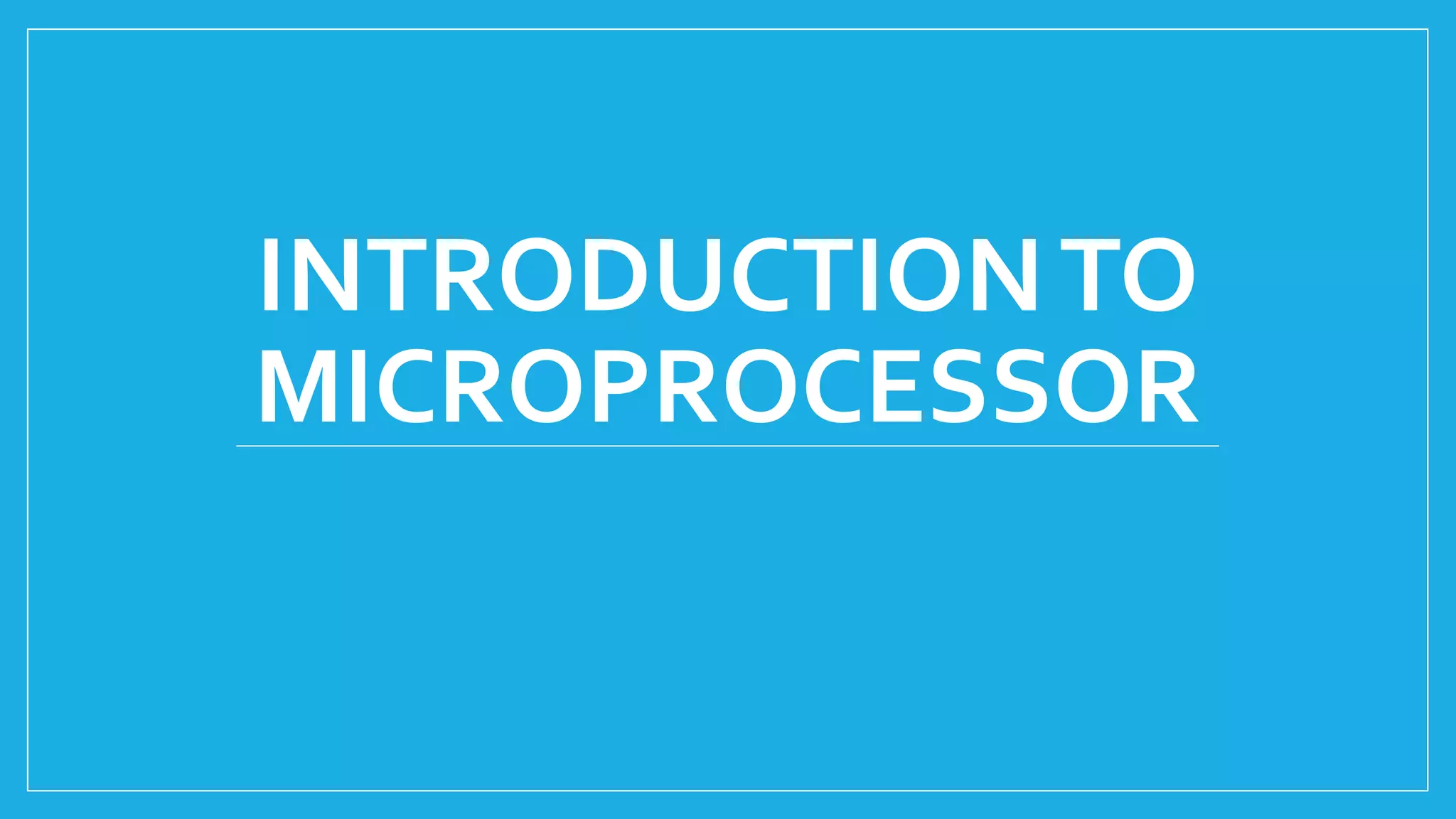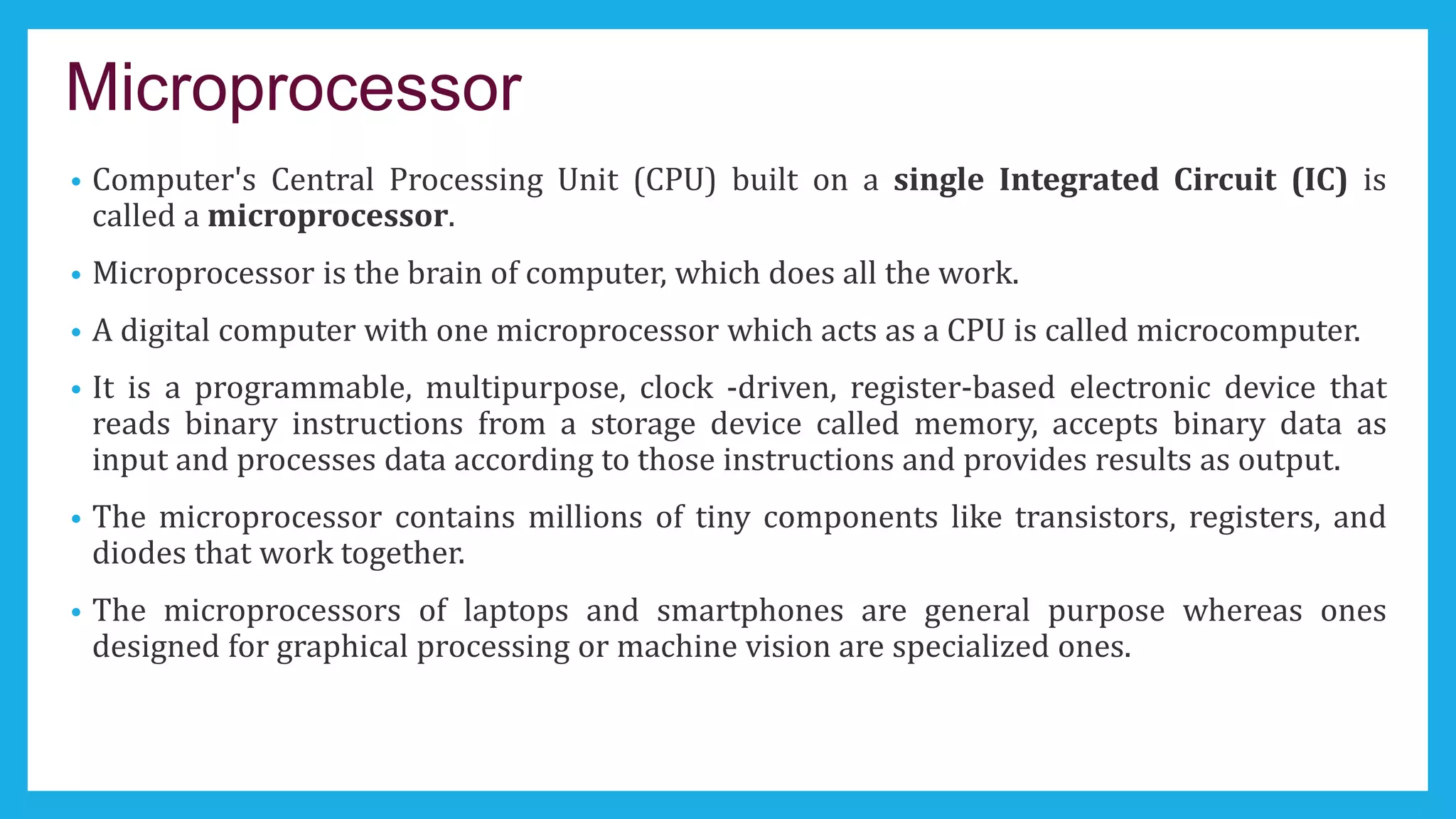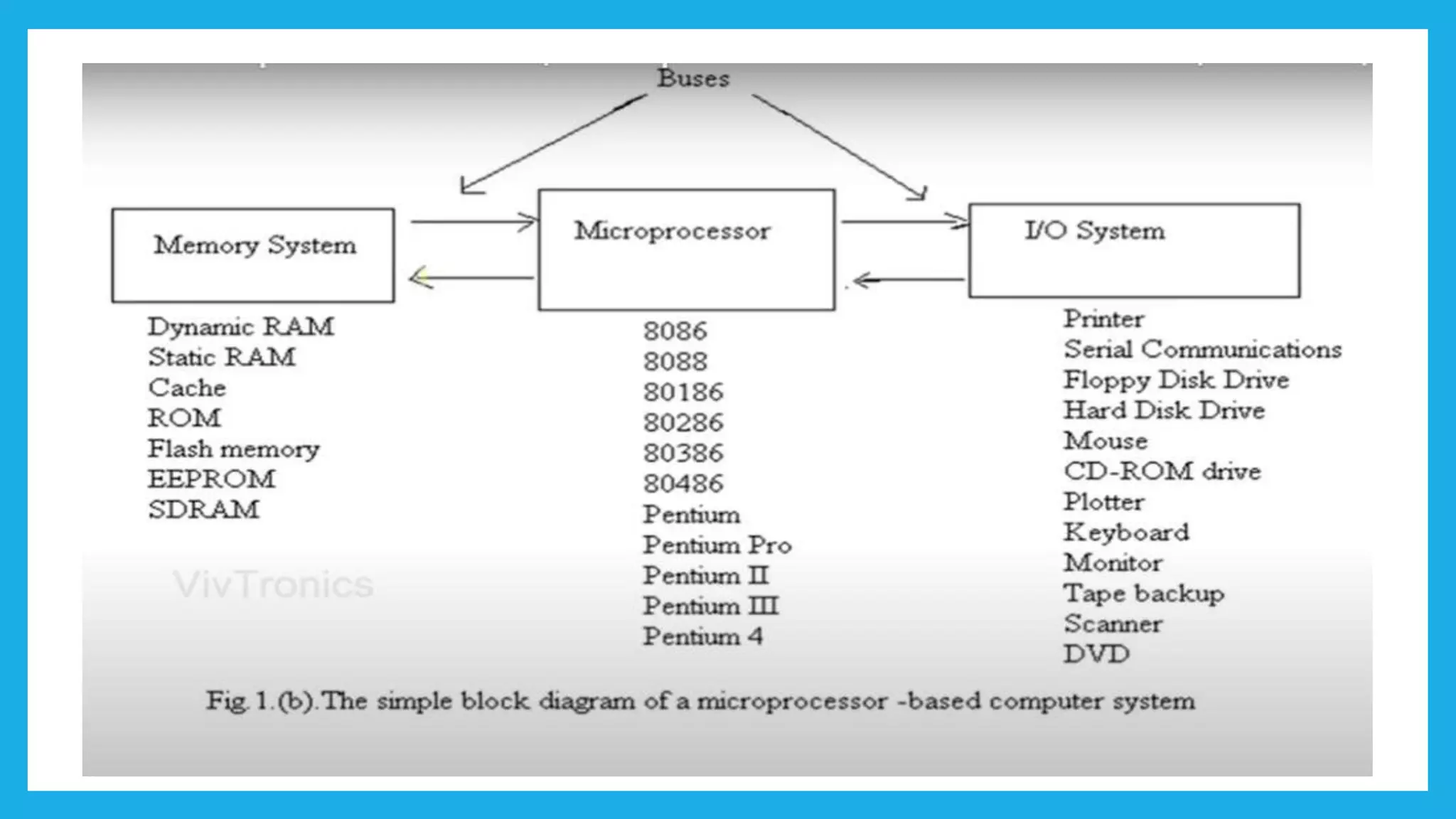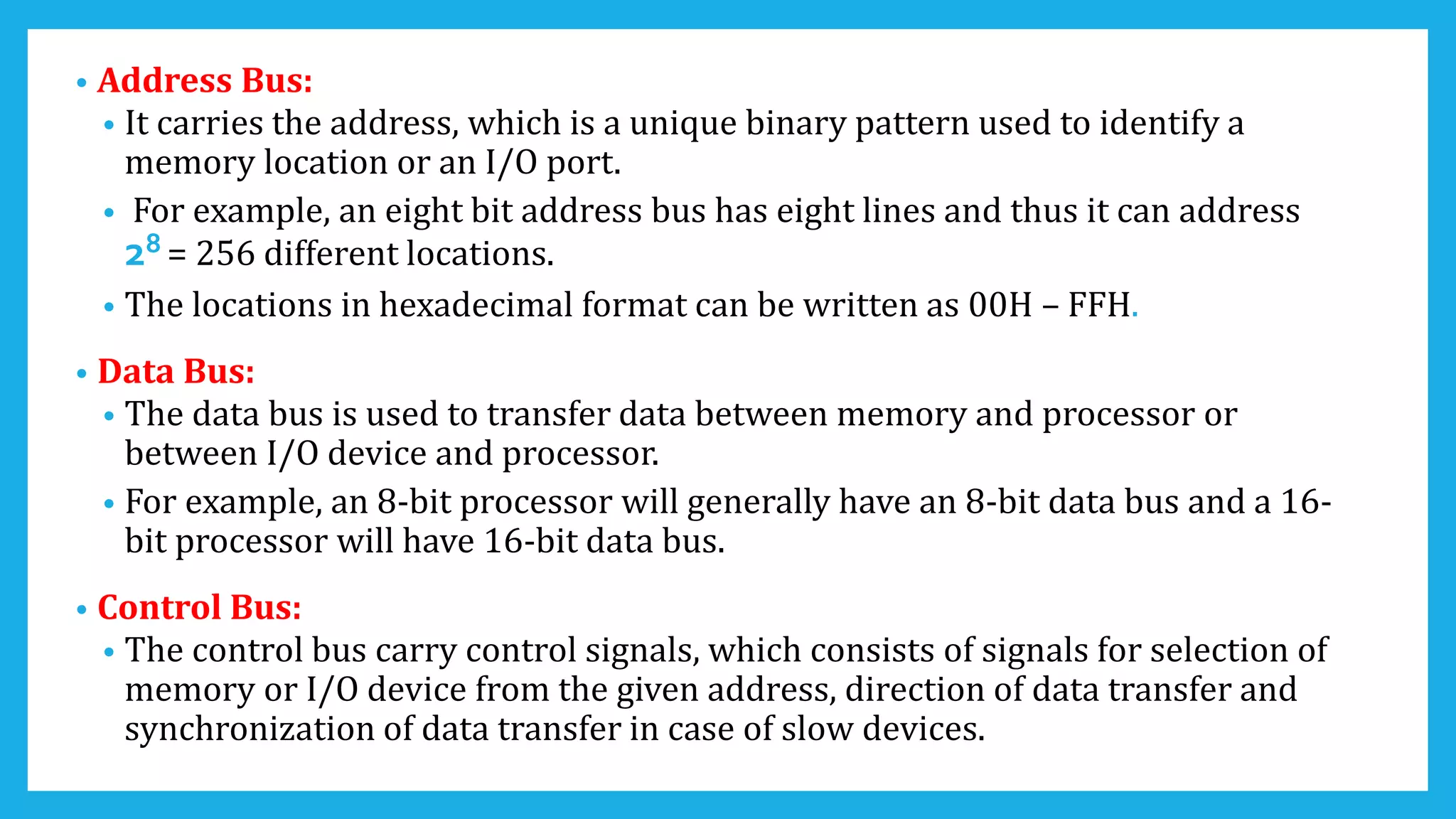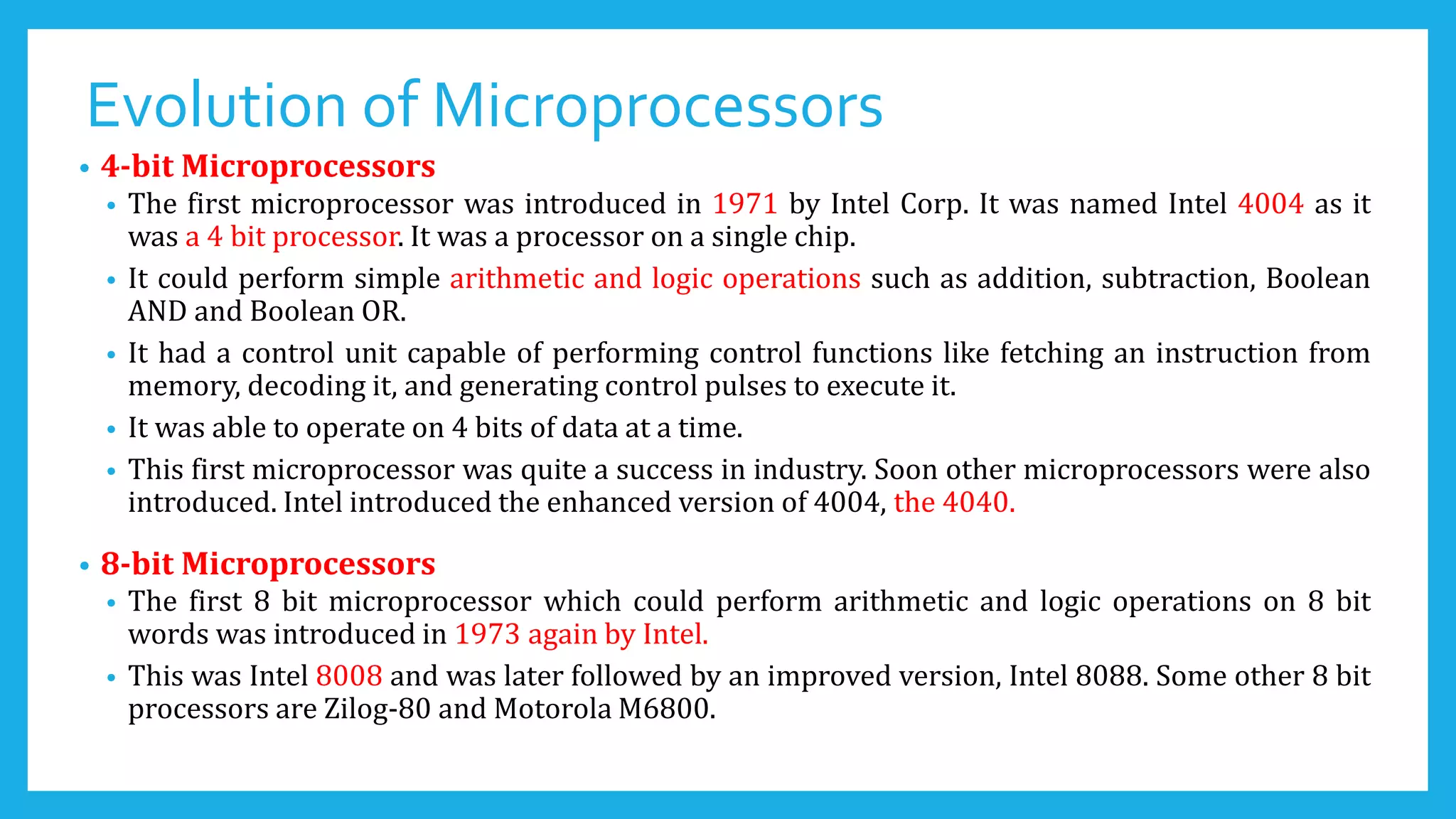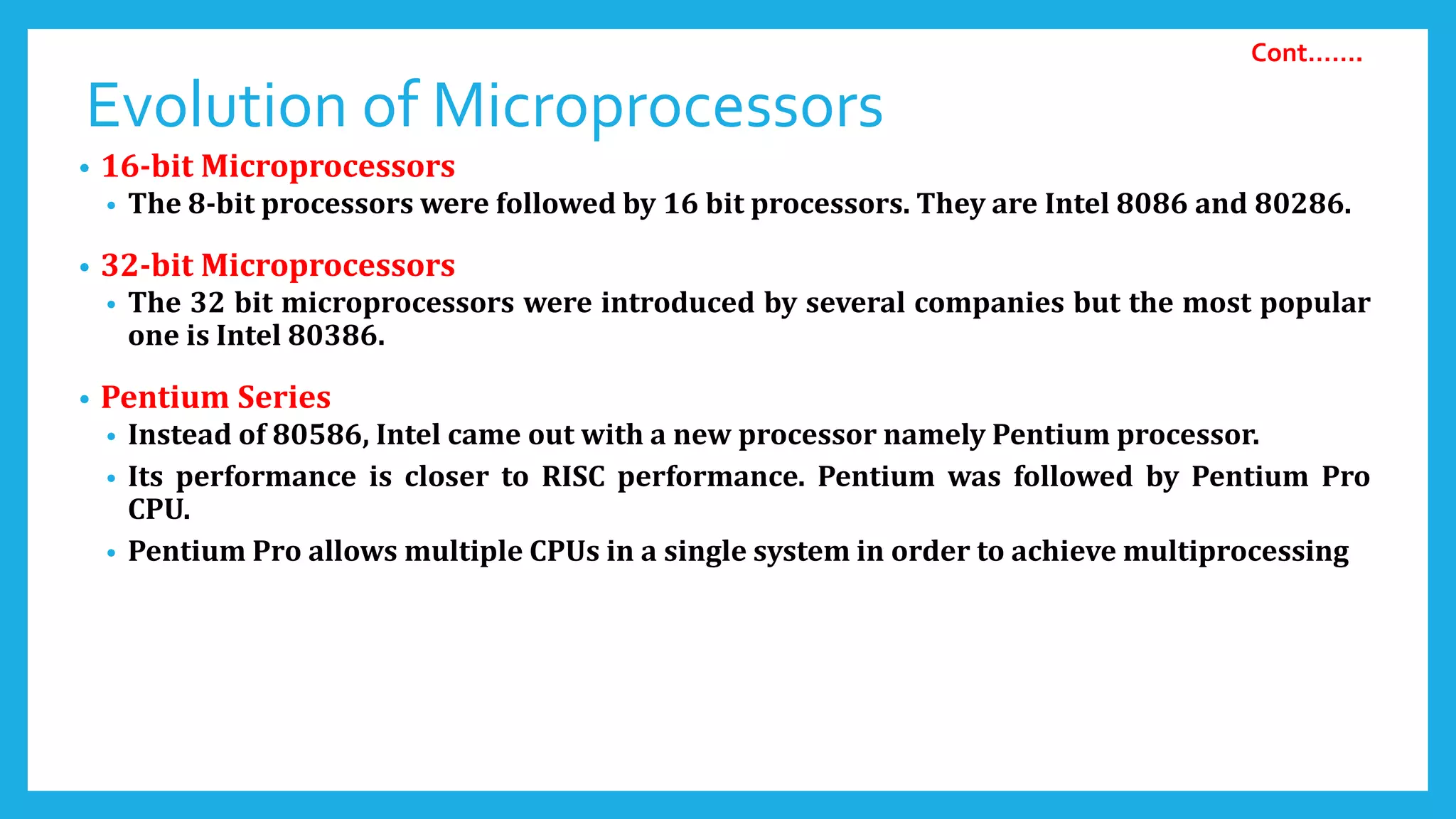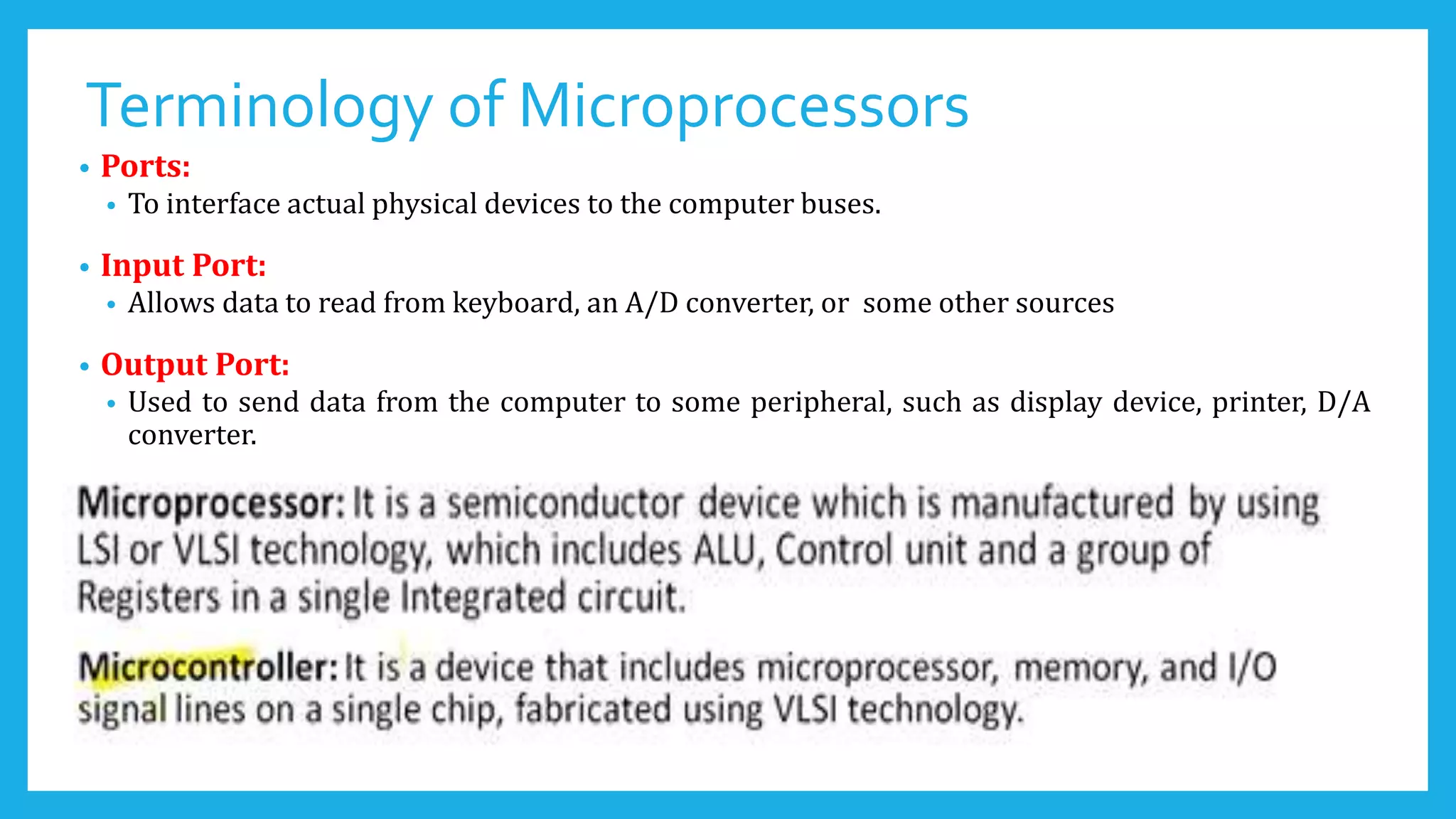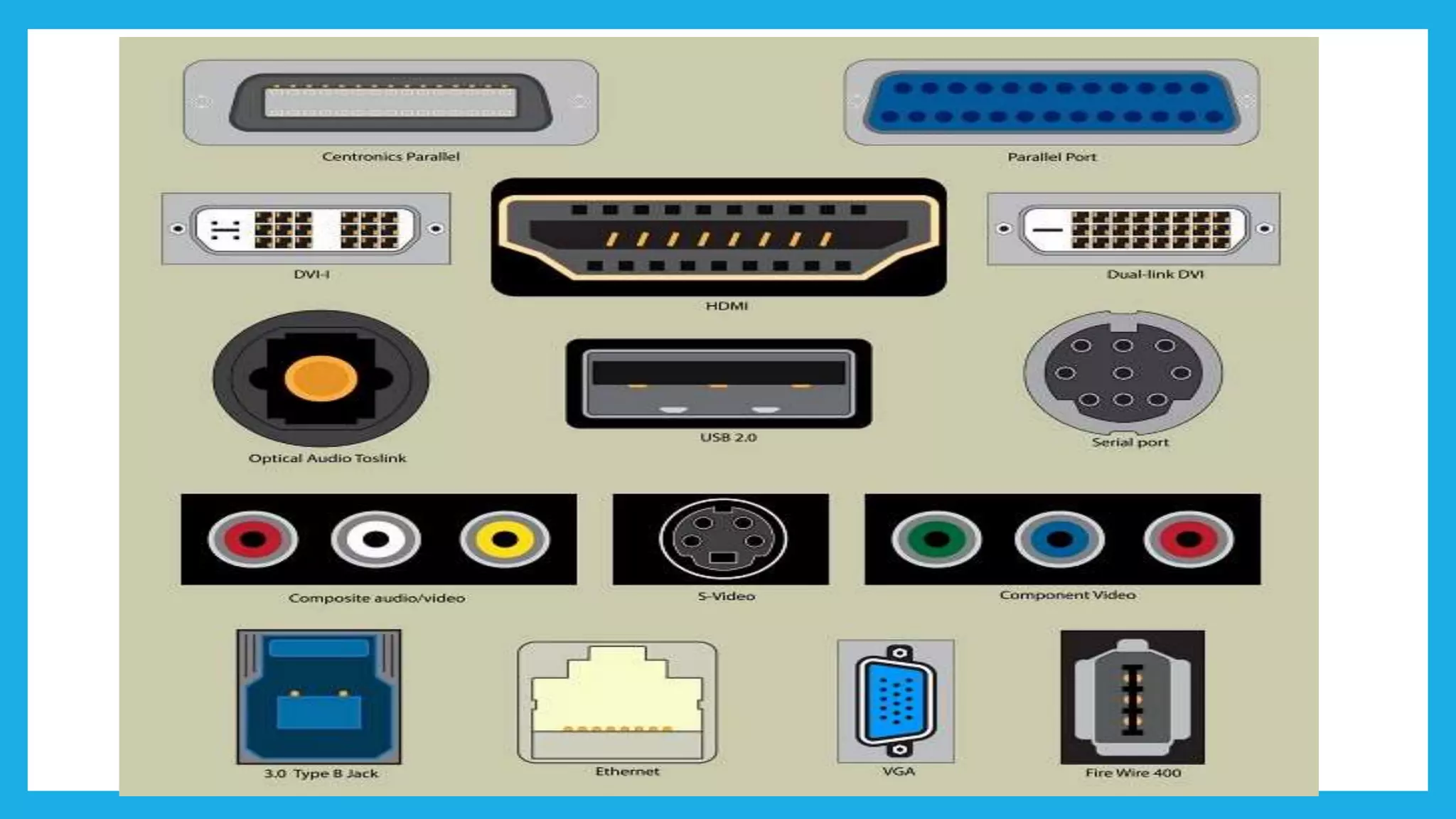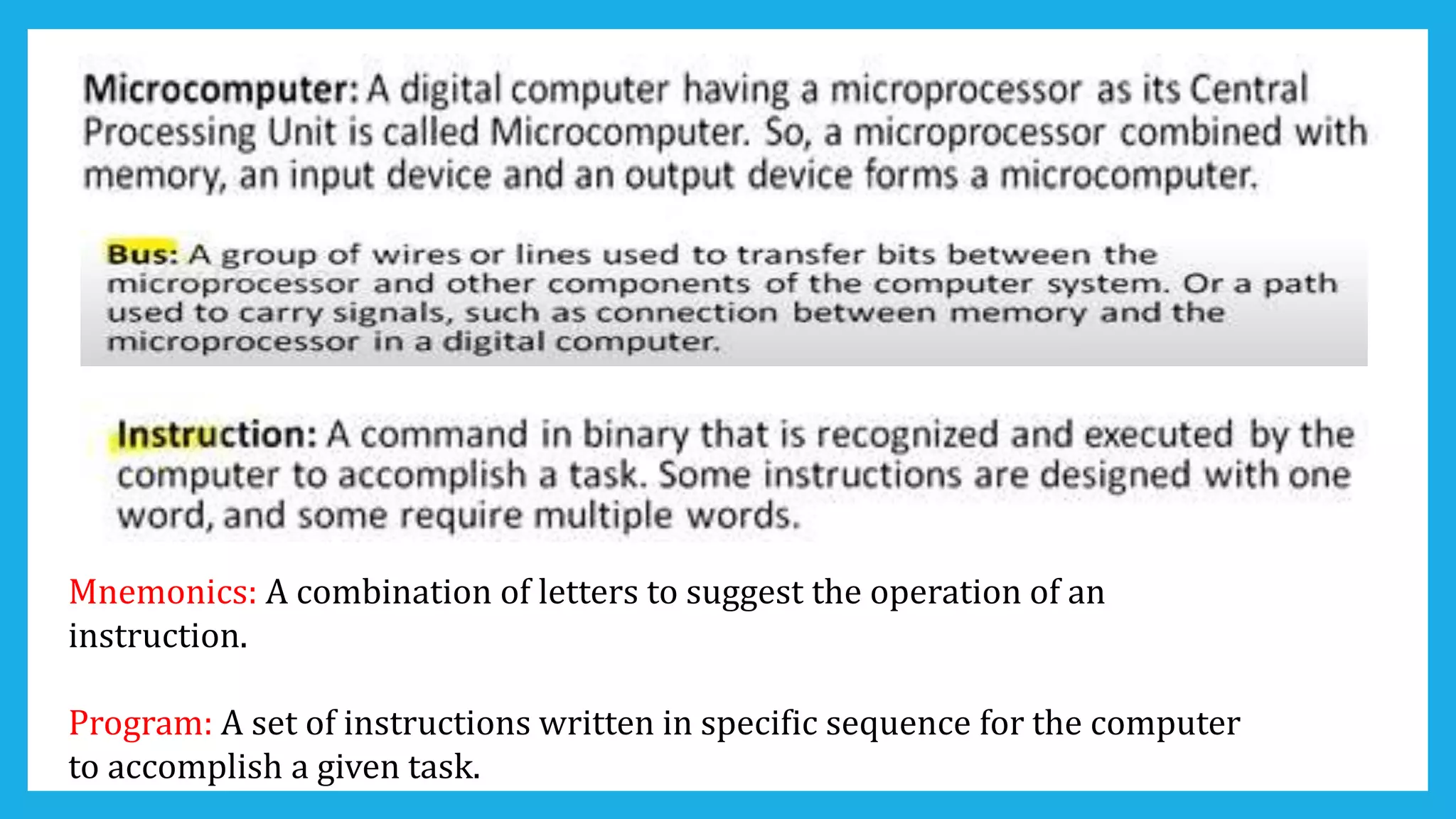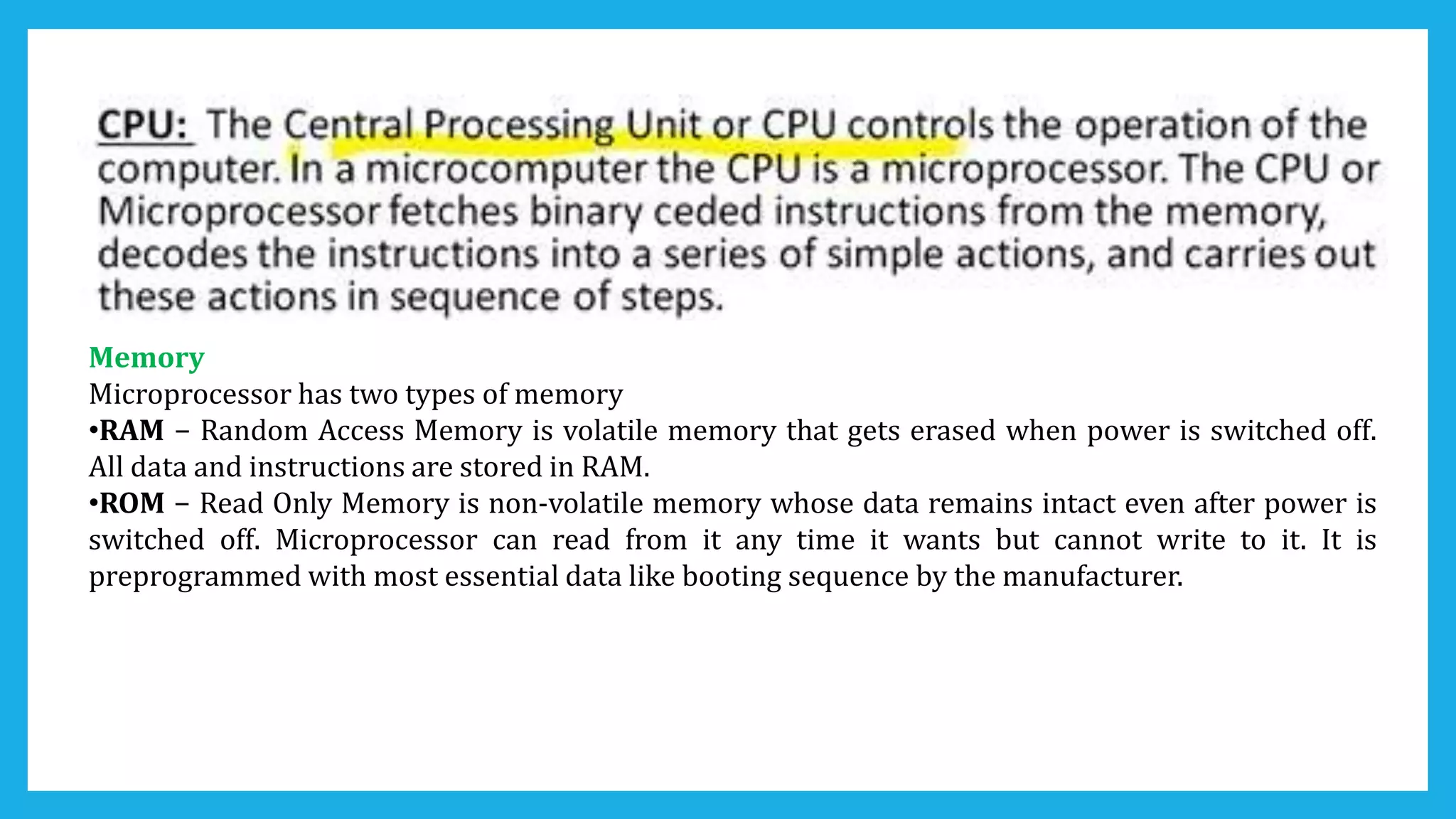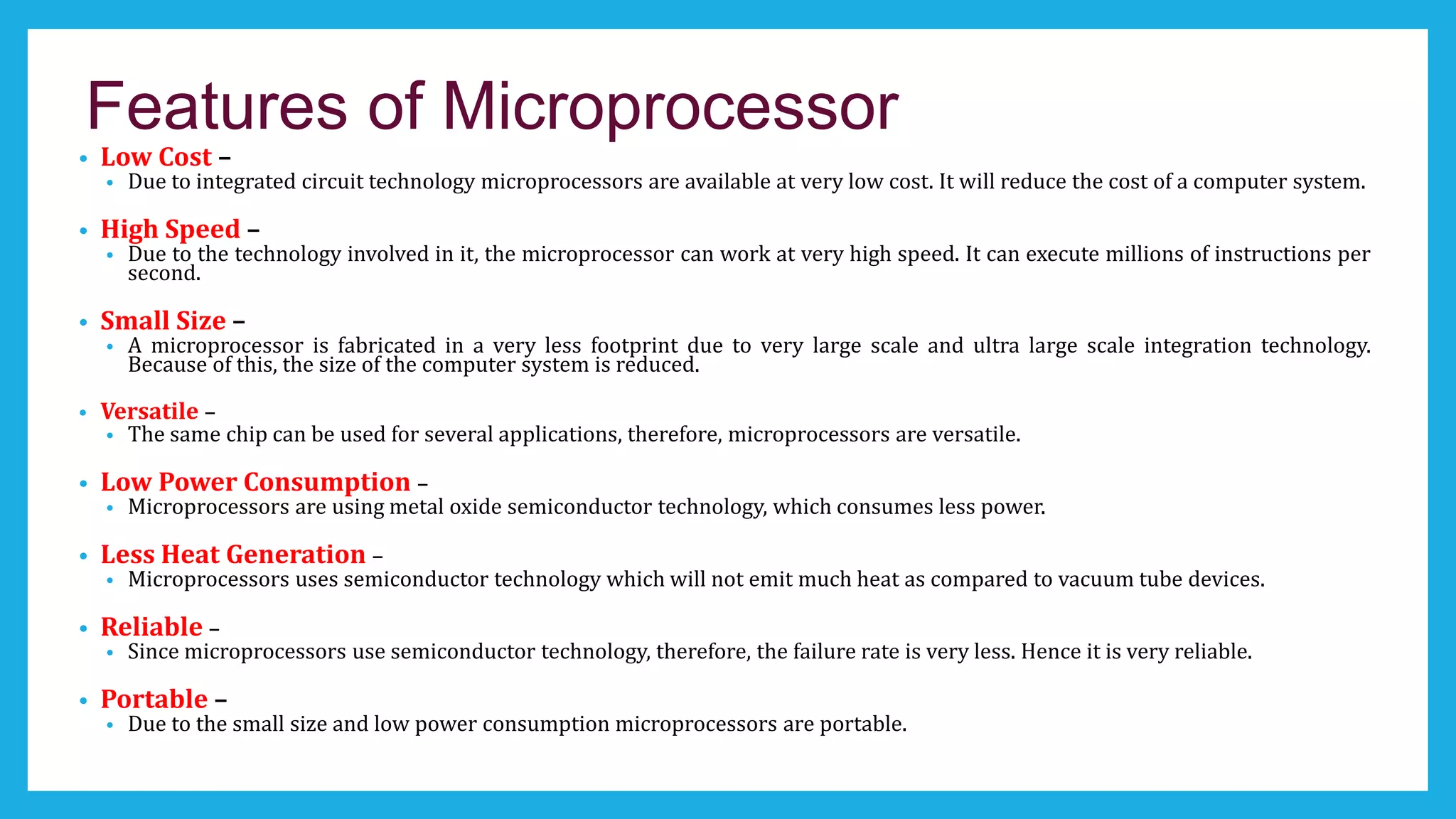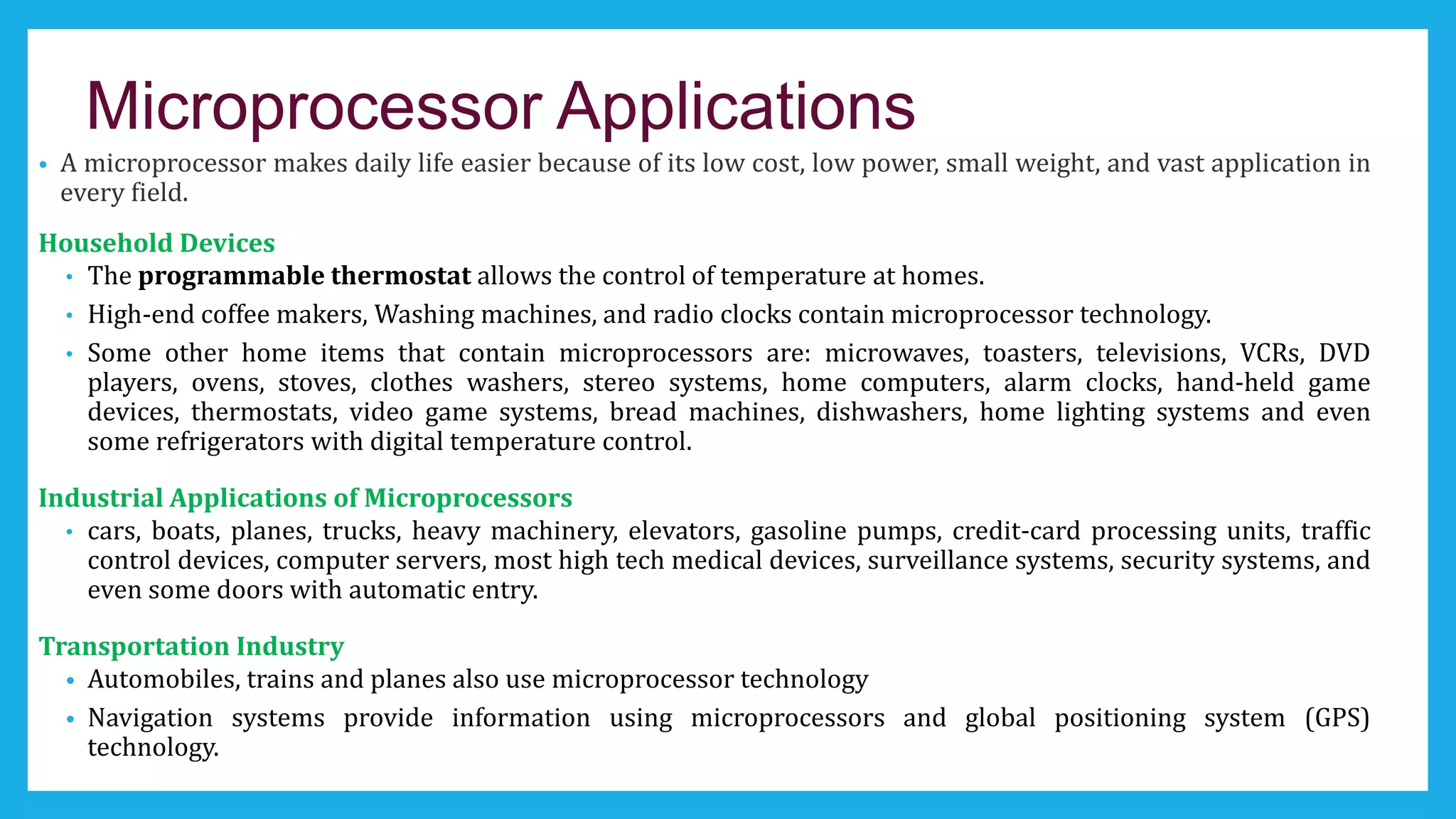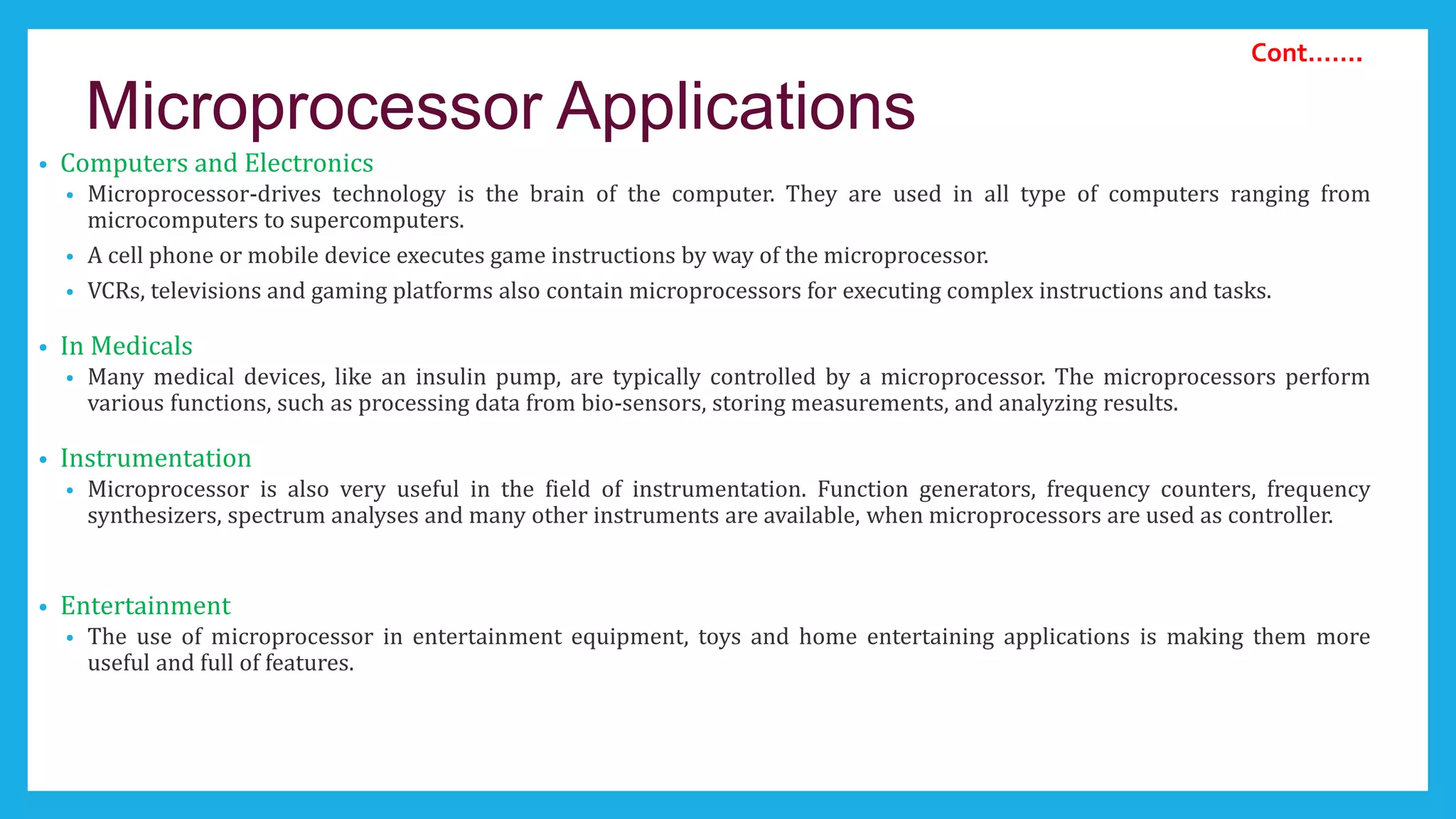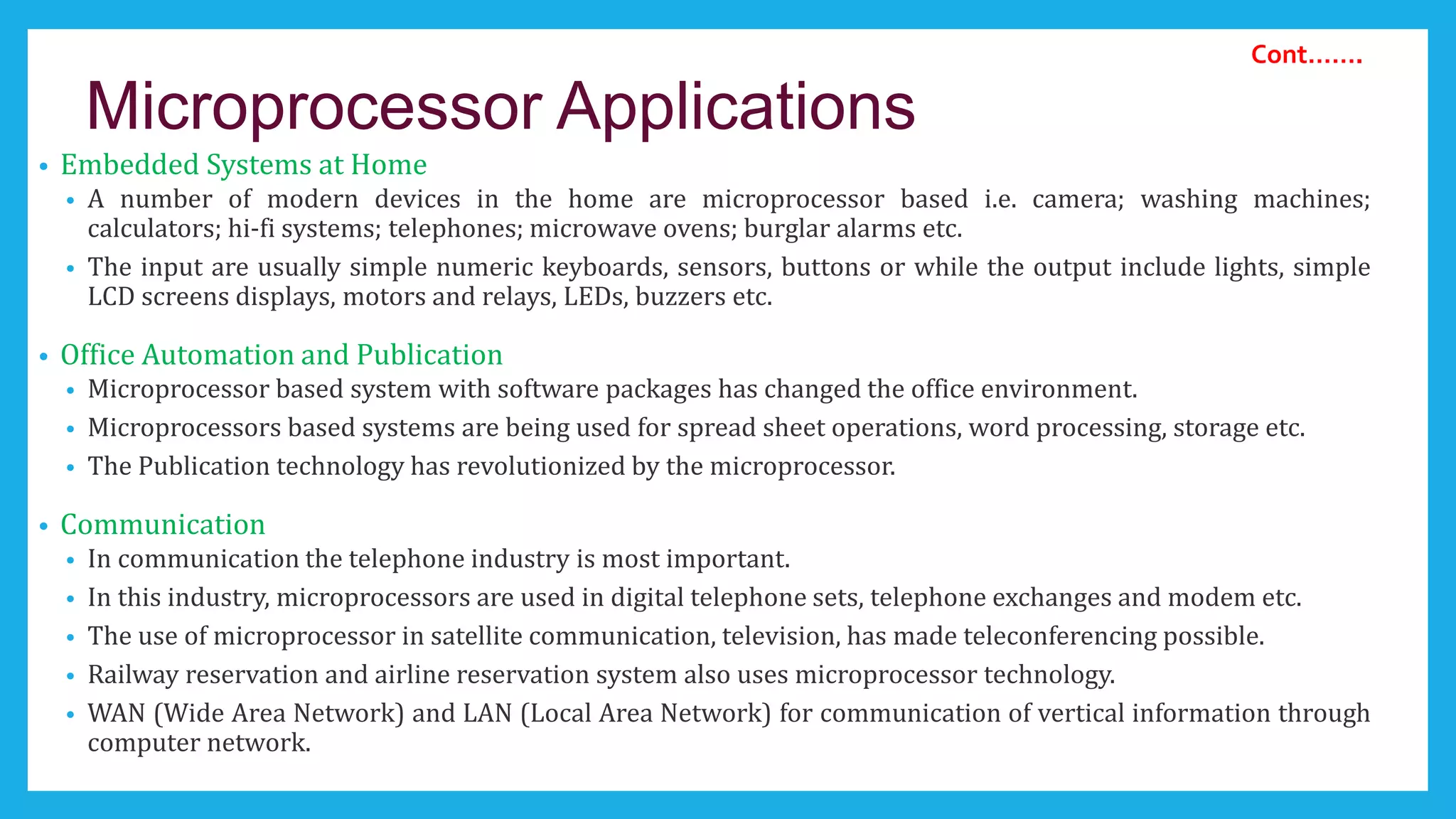This document provides an introduction to microprocessors including definitions, components, and applications. It discusses that a microprocessor is the central processing unit of a computer built on a single integrated circuit. It contains the arithmetic logic unit, control unit and registers. The document outlines the evolution of microprocessors from 4-bit to 32-bit models. It describes the basic components of a microcomputer including the address bus, data bus, and control bus. Finally, it discusses many applications of microprocessors in devices, industrial systems, transportation, computers, medical equipment, and more.
